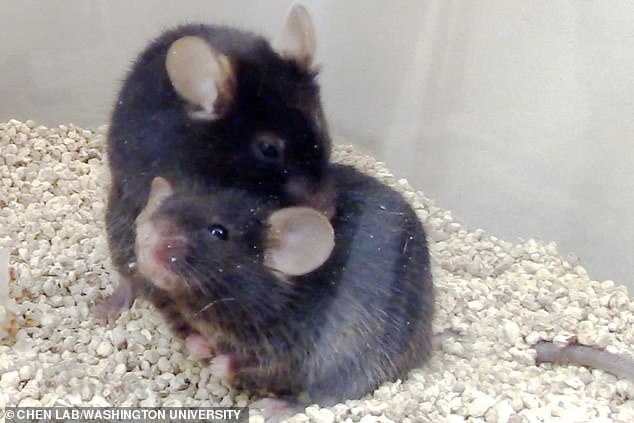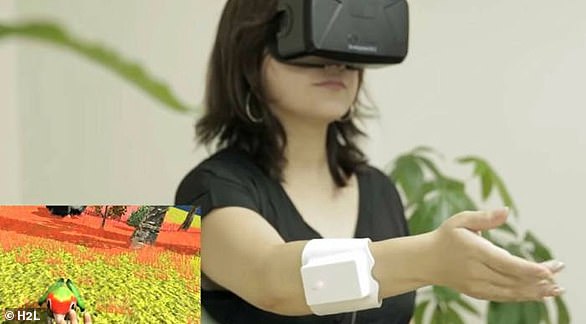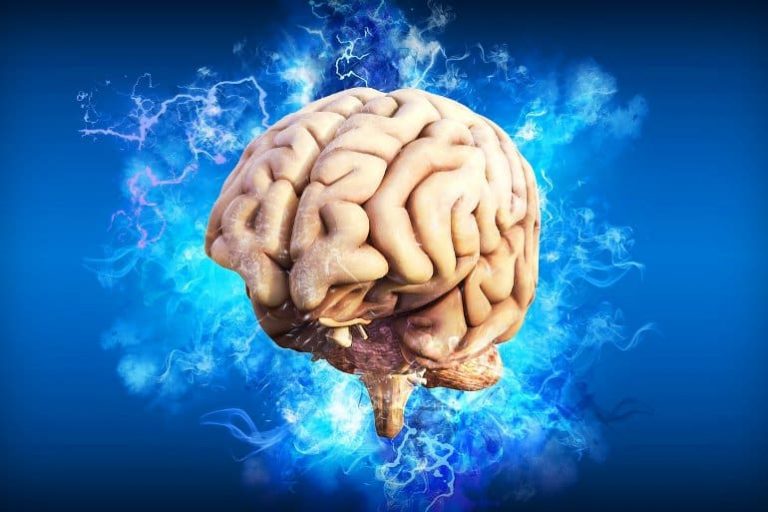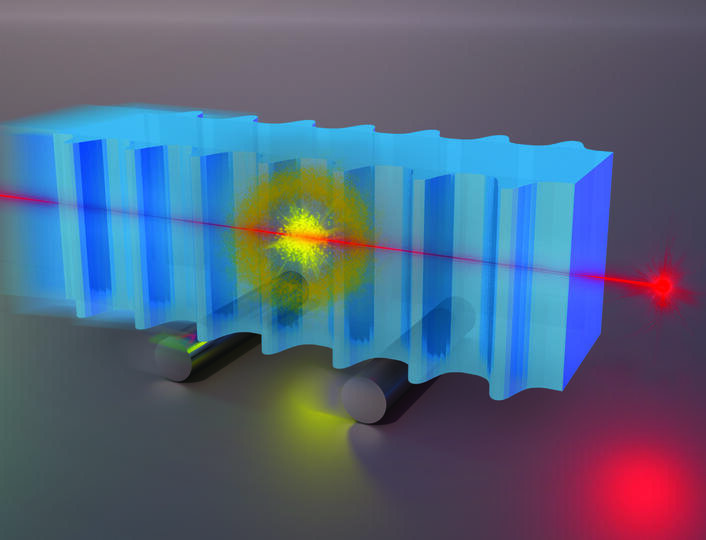Why hugs are so nice: Scientists discover a circuit that transmits a “nice touch” to the brain
Hugs, holding hands and stroking give us a psychological boost that is known to be important for emotional well-being and healthy development.
But until now, it was not known why we derive pleasure from this kind of touch.
Today, researchers at Washington University School of Medicine in St. Louis have identified a neural circuit that transmits the sensation known as “pleasant touch” from skin to the brain.
They say the finding in mice could help scientists better understand and treat disorders characterized by avoidance of touch and impaired social development in humans, including autism spectrum disorders.

Pleasant tactile sensations such as hugs give us a psychological boost which is known to be important for emotional well-being and healthy development

A pleasant feeling to the touch is very important in all mammals. Researchers have now identified a neural circuit that transmits this sensation from the skin to the brain
“A pleasurable feeling to the touch is very important in all mammals,” said Dr. Zhou-Feng Chen, director of the Center for the Study of Itching and Sensory Disorders at the University of Washington, who led the study.
“One of the main ways babies are fed is through touch. Holding the hand of a dying person is a very powerful and comforting force. Animals groom each other. People kiss and shake hands. Massage therapy reduces pain and stress and may benefit patients with psychiatric disorders.
“In these mouse experiments, we identified a key neuropeptide and hardwired neural pathway dedicated to this sensation.”
In addition to the neural circuit, the researchers discovered a neuropeptide – a chemical messenger that carries signals between nerve cells – that transmits the sensation of “pleasant touch”.
Chen’s team found that when they bred mice without this neuropeptide, called prokinectin 2 (PROK2), they couldn’t detect pleasant tactile cues, but continued to respond normally to itchiness and other stimuli.
“Now that we know which neuropeptide and which receptor only transmit pleasant tactile sensations, it may be possible to enhance pleasant tactile signals without interfering with other circuits,” he said.
‘[This] is crucial because a pleasant touch stimulates several hormones in the brain that are essential for social interactions and mental health.
Chen’s team found that mice engineered to lack PROK2 avoided activities such as grooming and showed signs of stress not seen in normal mice.
The researchers also found that mice lacking pleasurable tactile sensation from birth had more severe stress responses and exhibited greater social avoidance behavior than mice whose pleasurable tactile response was blocked in adulthood.
Chen said the finding highlights the importance of maternal contact in offspring development.

Holding a dying person’s hand is a ‘very powerful and comforting force’, and researchers say it’s controlled by a neuropeptide – a chemical messenger that carries signals between nerve cells
“Mothers like to lick their pups, and adult mice also groom frequently, for good reasons, such as bonding, sleep and stress relief,” he said.
But these mice avoid it. Even when their cage mates try to groom them, they back away. They also don’t groom other mice. They are removed and isolated.
One of the challenges of the study was figuring out how to get the mice to let themselves be touched — and whether they experienced the touch as pleasant, according to Chen.
“If an animal doesn’t know you, they usually shy away from contact because they may view it as a threat,” he said.
“Our challenging task was to design experiments that helped overcome the instinctive avoidance of animal touch.”
To get the mice to cooperate, the researchers kept the mice away from their cage mates for a while, after which the animals were more willing to be stroked with a soft brush, like pets petted and groomed. .
After several days of such brushing, the mice were then placed in a two-chamber environment. In one room the animals were brushed. In the other room, there were no stimuli of any kind.
When given the choice, the mice went to the chamber where they would be brushed.

The mice engage in grooming behavior, experiencing a phenomenon the researchers call pleasant touch. The findings could potentially help scientists better understand and treat disorders characterized by avoidance of touch and impaired social development.
Next, Chen’s team began working to identify neuropeptides that were activated by pleasant brushing.
They found that PROK2 in sensory neurons and the neural circuitry in the spinal cord expressing its receptor (PROKR2) transmitted pleasurable tactile signals to the brain.
In other experiments, they found that the neuropeptide they focused on was not involved in transmitting other sensory signals, such as itching.
Chen, whose lab was the first to identify a similar pathway dedicated to itching, said the pleasant touch sensation is transmitted by an entirely different dedicated network.
“Just as we have itch-specific cells and peptides, we have now identified pleasant-touch specific neurons and a peptide to transmit these signals,” he said.
The study was published in the journal Science.
#hugs #nice #Scientists #discover #circuit #transmits #nice #touch #brain







